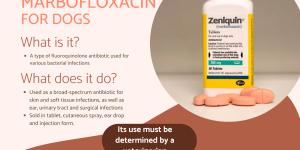Types of Ketoconazole for Dogs



See files for Dogs
Ketoconazole is an antifungal medication which is sometimes prescribed in veterinary medicine, although it is used on humans also. A relatively common drug, ketoconazole can be purchased over the counter. This means many animal guardians might want to use this product on their companion animals if they think the dog might have a fungal infection. Although ketoconazole comes in various forms, including shampoo, cream or oral medication such as tablets, how it is used is up to the veterinarian.
AnimalWised brings you the different types of ketoconazole for dogs and helps to explain their uses and dosage. An important factor in treating dogs with ketoconazole is its potential side effects, another reason following a veterinarian's guidelines is so essential.
The different types of ketoconazole
Ketoconazole is an antimycotic medication, otherwise known as an antifungal medicine. As it is incorporated in various different medications, the dosage of ketoconazole in any given formula will differ. It is often sold under the brand name Nizoral. While a veterinarian will prescribe this medicine in different circumstances, it is also available to purchase over the counter. While its availability may make it seem like it can be used freely, ketoconazole has different interactions and can be dangerous if used incorrectly.
The type of ketoconazole which a veterinarian will prescribe depends on its use. However, in humans ketoconazole tablets or pills are now very rare, but may be more common in veterinary medicine. Oral ketoconazole has the advantage of working more quickly than topical ketoconazole. However, topical products help to control the site of certain infestations. The most common types of ketoconazole for dogs include:
- Ketoconazole shampoo: since most dogs are covered in hair/fur, washing with a medicated shampoo can help address a fungal problem. It can be used on the whole body or only certain areas, but instructions need to be followed carefully regardless.
- Ketoconazole tablets: this antimycotic can also be found in tablet or pill form. This is a generalized medicine which goes into the dog's bloodstream, meaning dosage needs to be carefully controlled.
- Ketoconazole cream: topical use of ketoconazole is common and preferred in human use. Due to a dog's fur and their tendency to lick themselves, topical cream is not always suitable, but it will depend on the individual dog.
- Ketoconazole eye drops: since the penetration of ketoconazole can be strong, eye drops are not commonly used. Sold under product names such as Ketostar, it is usually in a 0.5% solution and is used for more severe eye infections. Another eye infection treatment such as natamycin may be more suitable in milder cases.
Topical medications such as ketoconazole shampoo are not necessarily treatments for the fungal infestation itself. Instead, they are used to treat the symptoms of the infestation. It reduces the contagiousness of the fungus, but it will usually require a more systemic antifungal treatment to address the problem more directly. Ketoconazole shampoo may also contain chlorhexidine, which is a bactericidal disinfectant.
Regardless of the type or form, ketoconazole is the same active ingredient in these different products. The treatment period in these cases is usually prolonged, generally exceeding two months. For topical use, ketoconazole cream is also like the shampoo. It basically decreases the risk of infection and is used in combination with systemic treatment.
Why is ketoconazole used for dogs?
Since ketoconazole has an antifungal effect, it is capable of eliminating certain fungi such as Microsporum canis. This is a type of fungus which causes various fungal infections of the skin (dermatophytoses) such as ringworm. However, it is also used to act against various yeast infections such as Malassezia pachydermatis. This type of yeast infection is related to otitis meaning that it is commonly involved in ear infections.
These types of diseases and infestations are usually very contagious, so it is important that the treatment is begun as soon as possible. We will also need to follow various hygienic measures which are needed to ensure they do not spread. This may involve isolating the animal until they are free of contagion and disinfecting any area it has been using previously. Don't forget that fungal infection in dogs can be zoonotic, i.e. it can pass on to humans.
In addition to fungal and ear infections, ketoconazole has also been useful in treatment of hyperadrenocorticism, more commonly known as Cushing's syndrome.

Dosage of ketoconazole for dogs
Ketoconazole tablets should be administered in doses of 5 mg per kg of weight every 12 hours. Alternatively, it may be given in 10 mg per kg of weight if given once a day. It is best to offer the medication with food as it is better absorbed in this form. Ketoconazole pills or tablets can come in different sizes, usually 100 mg, 200 mg or 400 mg tablets. You may have to break them up to give the correct dosage.
Whatever the dosage and however ketoconazole is administered, it is essential you follow the veterinarian's instructions carefully. Improper administration of this or any medication can develop serious consequences for the animal, such as poisoning or digestive problems.
Side effects of ketoconazole for dogs
Ketoconazole, even at the recommended dose, can cause adverse reactions. These side effects will differ depending on the amount of the dosage, the overall health of the individual dog and other factors. They include:
- Anorexia
- Vomiting
- Diarrhea
- Liver problems
- Hormonal imbalance
- Neurological disorders
- Fetal malformation
As the drug is strong, it can cause damage when being processed. This is because it is essentially toxic to the liver, leading to liver-related problems such as jaundice. Hormonal imbalance can also be a side effect of ketoconazole. The drug interferes with metabolism of some hormones and their compounds, resulting in affecting testosterone levels. In turn, testosterone imbalance can affect their reproductive capability and even influence their behavior.
In addition to the above side effects, ketoconazole is teratogenic and embryotoxic in high doses. This means it can lead to malformation in fetuses. For this reason, it should never be given to pregnant dogs. It is also not recommend for puppies under 2 months of age or any animal with liver disease. Ketoconazole has different contraindications with other drugs so it is essential your veterinarian is informed whether they are taking any other medication.
Other side effects of ketoconazole in dogs are less common. They include neurological issues, such as apathy, uncoordination or tremors. When there is an overdose, in addition to symptoms such as those mentioned above, itching and lack of hair can also be seen. Take your dog to the vet immediately if you suspect they have suffered a ketoconazole overdose.

This article is purely informative. AnimalWised does not have the authority to prescribe any veterinary treatment or create a diagnosis. We invite you to take your pet to the veterinarian if they are suffering from any condition or pain.
If you want to read similar articles to Types of Ketoconazole for Dogs, we recommend you visit our Medicine category.
- Carlotti and Gatto. (2006). The art of shampoos in canine and feline dermatology: treatment and prevention strategies. Clin. Vet. Small Anim, 26 (1), 29-38.
https://ejournals.epublishing.ekt.gr/index.php/jhvms/article/view/15080 - ESCCAP Guide nº2. (2015). Control of superficial mycoses in dogs and cats. Retrieved October 11, 2019, from
https://www.esccap.org/page/GL2+Superficial+Mycoses+in+Dogs+and+Cats/26/#.XaB57kb7SUk







